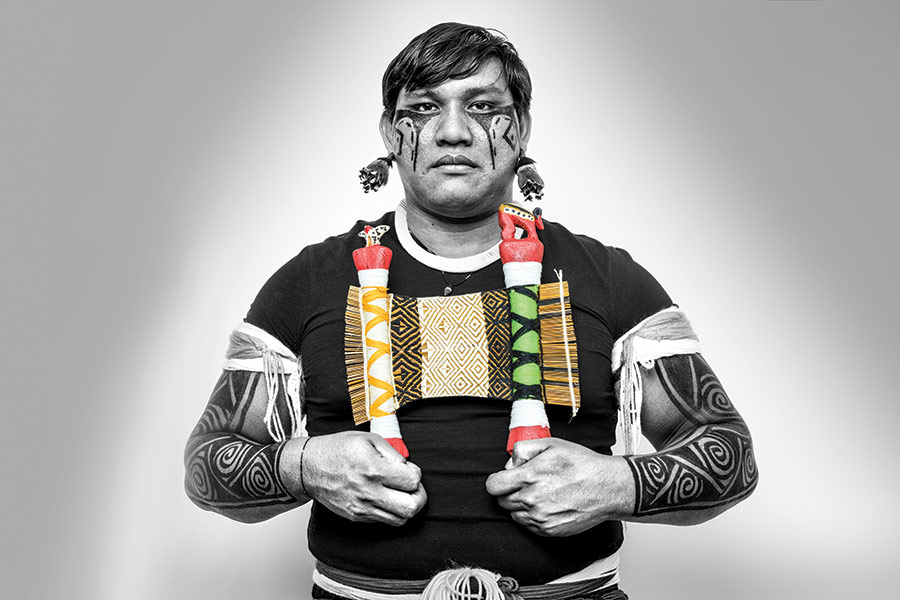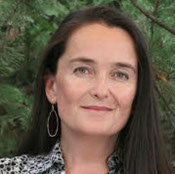Every two years, the UN Development Program (UNDP) Equator Initiative awards the prestigious and highly competitive Equator Prize. The prize recognizes outstanding community initiatives from across the planet advancing innovative models for tackling poverty, environment, and climate challenges. Solutions are as diverse as the development challenges they face. What unites them is that each shows the power of people to bring about change while protecting the planet.
The Sustainable Development Goals (SDG) Indigenous Heroes, “SDG Heroes,” is a unique photographic series produced in collaboration with The United Nations Development Programme (UNDP) and Ralph Reutimann Photography. It celebrates local and global leaders at the forefront of meeting the 17 United Nations Sustainable Development Goals. Each of the SDG Heroes holds a personal object symbolizing the single SDG Goal they feel is most vital for them. The series celebrates indigenous SDG Heroes as guardians of ancient wisdom for people and the Earth.
If you like this, subscribe here for more stories that Inspire The Future.
“One of the intense pleasures of travel is the opportunity to live amongst peoples who have not forgotten the old ways, who still feel their past in the wind, touch it in the stones polished by the rain, taste it in the bitter leaves of plants.
Just to know that, in the Amazon, Jaguar shamans still journey beyond the Milky Way, that the myths of the Inuit elders still resonate with meaning, that the Buddhists in Tibet still pursue the breath of the Dharma is to remember the central revelation of anthropology: the idea that the social world in which we live does not exist in some absolute sense, but rather is simply one model of reality, the consequence of one set of intellectual and spiritual choices that our particular cultural lineage made, however successfully, many generations ago.
All these people teach us that there are other options, other possibilities, other ways of thinking and interacting with the Earth. This is an idea that can only fill us with hope.
We share with these peoples a sacred endowment, a common history written in our bones. The myriad cultures of the world are not failed attempts at modernity, let alone failed attempts to be us. They are unique expressions of the human imagination and heart, unique answers to a fundamental question: What does it mean to be human and alive?”
Wade Davis – Explorer In Residence, National Geographic Society
^ 1. Yakagi Kuikuro Mehinaku
(Pictured above) Xingu Indigenous Land Association, Brazil
Global Goal #15 is important to me: Life on Land. Although, I prefer to see it as “Life on Earth.” The planet was the work of a creator and was made for life of many species. Today, it’s being disrespected by humans. Natural resources are being destroyed, water and air polluted. I see a future without life. It’s disheartening when I see big machines destroying the forest. I can imagine the despair of animals – whose house is being destroyed. Capitalists must learn to value this world, not just think about money for their pockets. The object I’m holding is a Hãda (comb) that is important to my people. With it we are combing our hair when we dance to celebrate life on Earth.
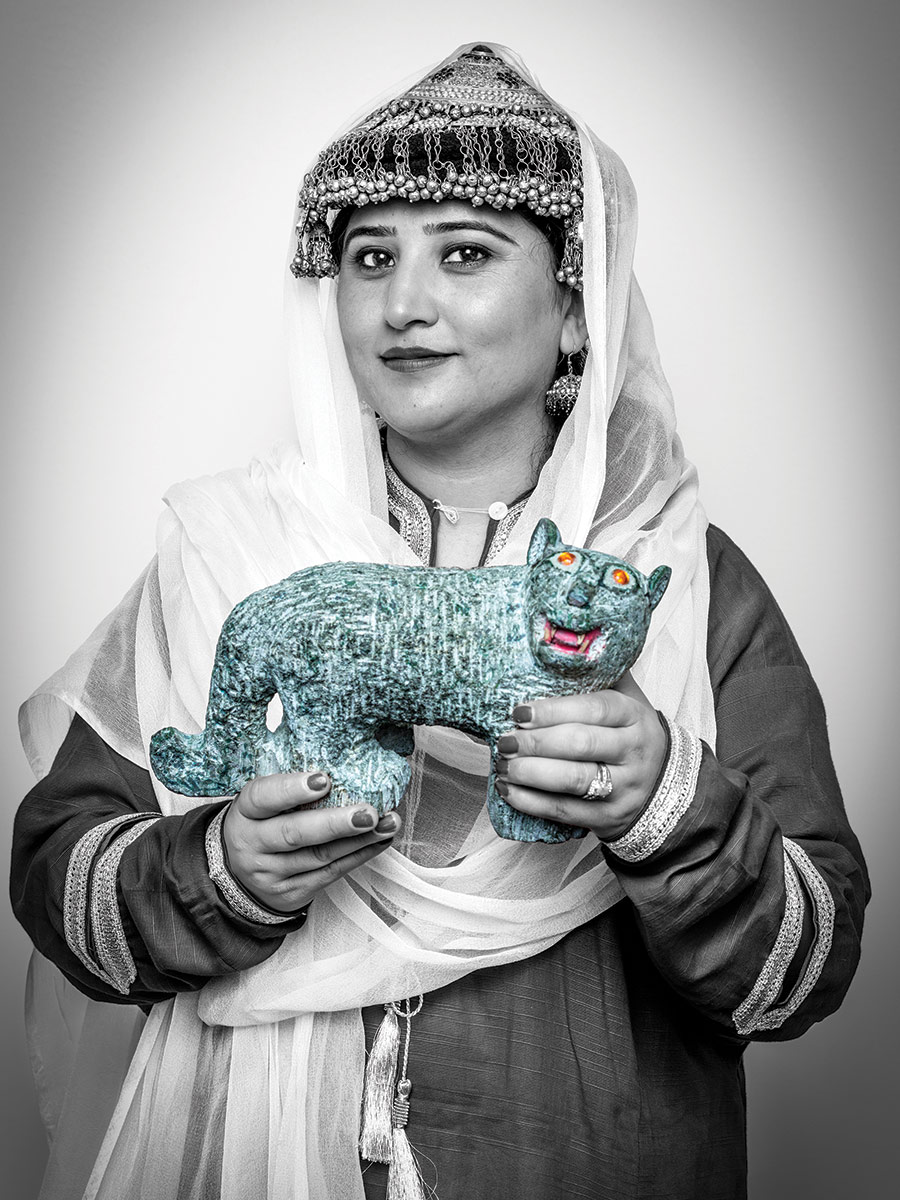
^ 2. Naila Rizvi
Balistan Wildlife Conservation Development Organization, Pakistan
The object I’m holding is a snow leopard, now an endangered species. We want to resolve the conflict between snow leopards and communities, and provide incentives to farmers who kill them because they kill livestock. Our area is famous for snow leopards and our organization focuses on providing incentives such as livestock compensation, predator-proof corrals, awareness, and girls’ education to poor farmers. If people get education there is a better chance they will protect wildlife. We need to maintain our ecosystem and balance nature with our needs, because nature is the basis for all life. My chosen SDG goal is #15: Life on Land.
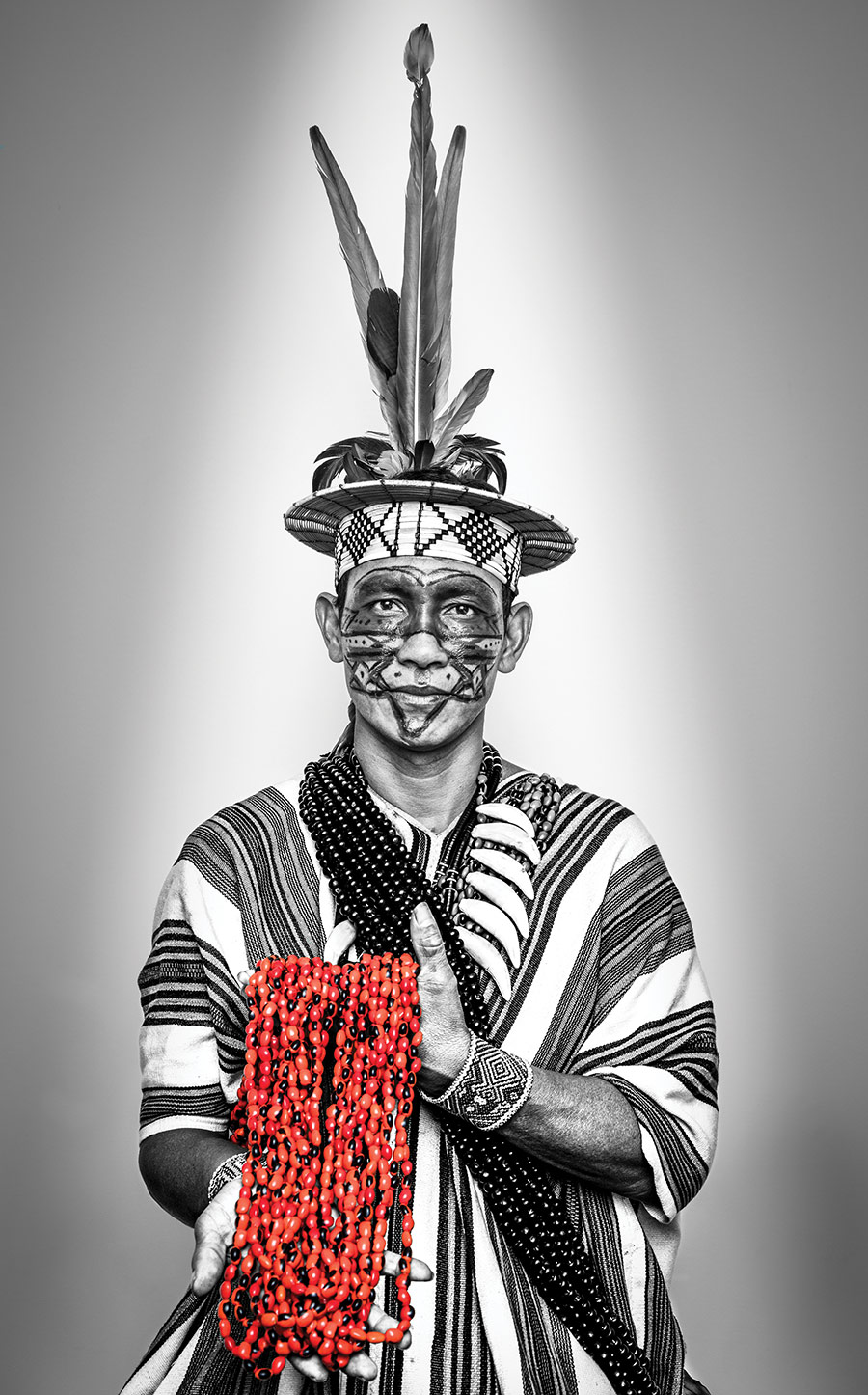
^ 3. Maldete (Benki) da Silva Pianco
Association of Ashaninka People of the Amônia River, Brazil
Nature today offers us everything. These necklaces are part of our living culture because we use all the fruits in the forest for adornment. They are our riches and beauty. It’s also a way of showing that we are always with something alive on our body. It’s a spiritual embodiment of value with nature. We depend on the land, and the land depends on people at the same time. We have a diversity of species too, that must be cared for permanently, because from that we get our survival. The world today is falling into a bankruptcy, that is being matched in our spiritual realm. We not only seek the defense of indigenous people, but of all humanity – the planet that generates the survival of us all. Every human should assume their role, don’t wait for something to become an issue first.
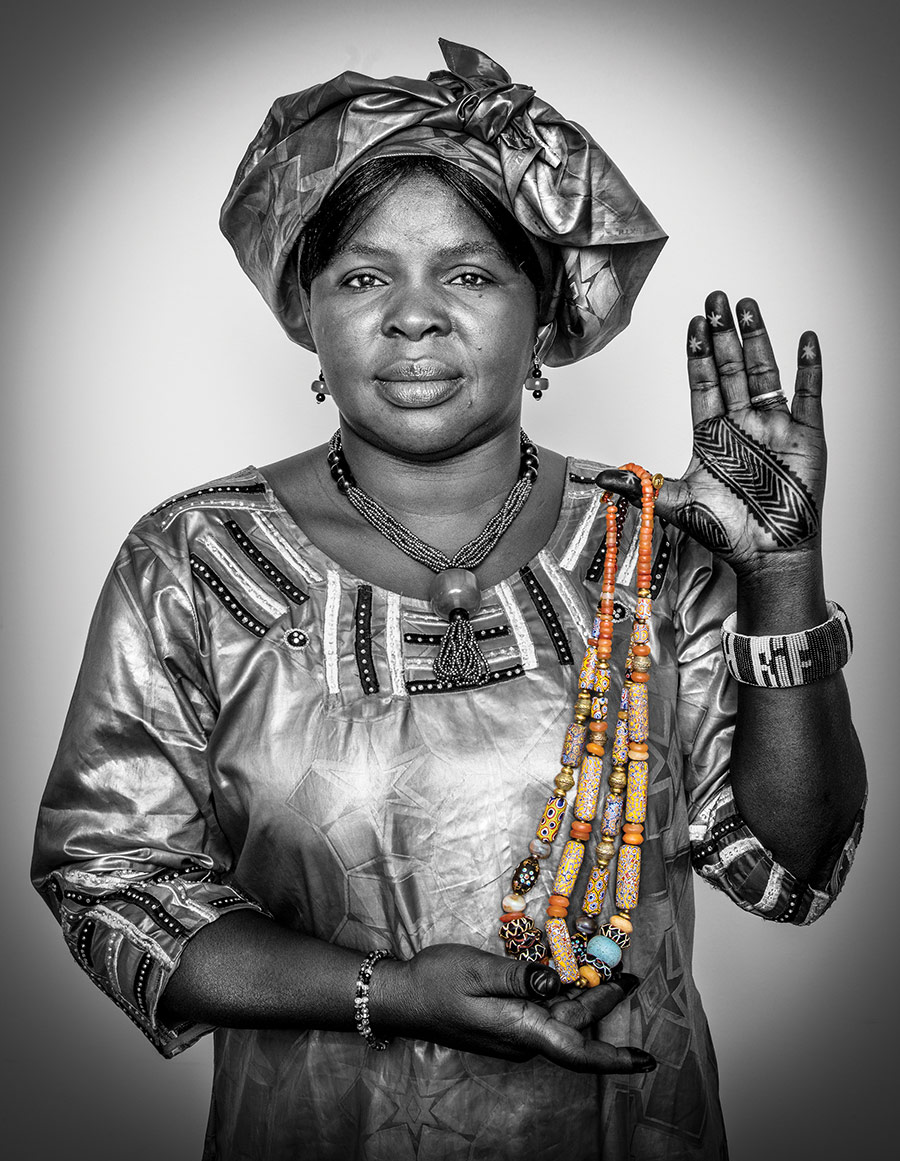
^ 4. Aoua Cherif Doumbia
The Mali Elephant Project, Mali
My focus is on protecting, restoring and promoting sustainable use of terrestrial ecosystems. Sustainably managed forests can combat desertification, halt and reverse land degradation and biodiversity loss. My chosen SDG goal is #15: Life on Land. The Gourma people exist on agro-pastoral activities and are very dependent on natural resources. The necklace I hold symbolizes the alliance between all ethnic groups that use the same resources in the same areas. It’s an object of adornment worn by a woman that represents the source of all life on earth. Our project has sensitized 7,968 households around environmental protection, which includes elephant poaching, the occupation by humans of elephant habitats and the harmful effects of bush fires and tree cutting.
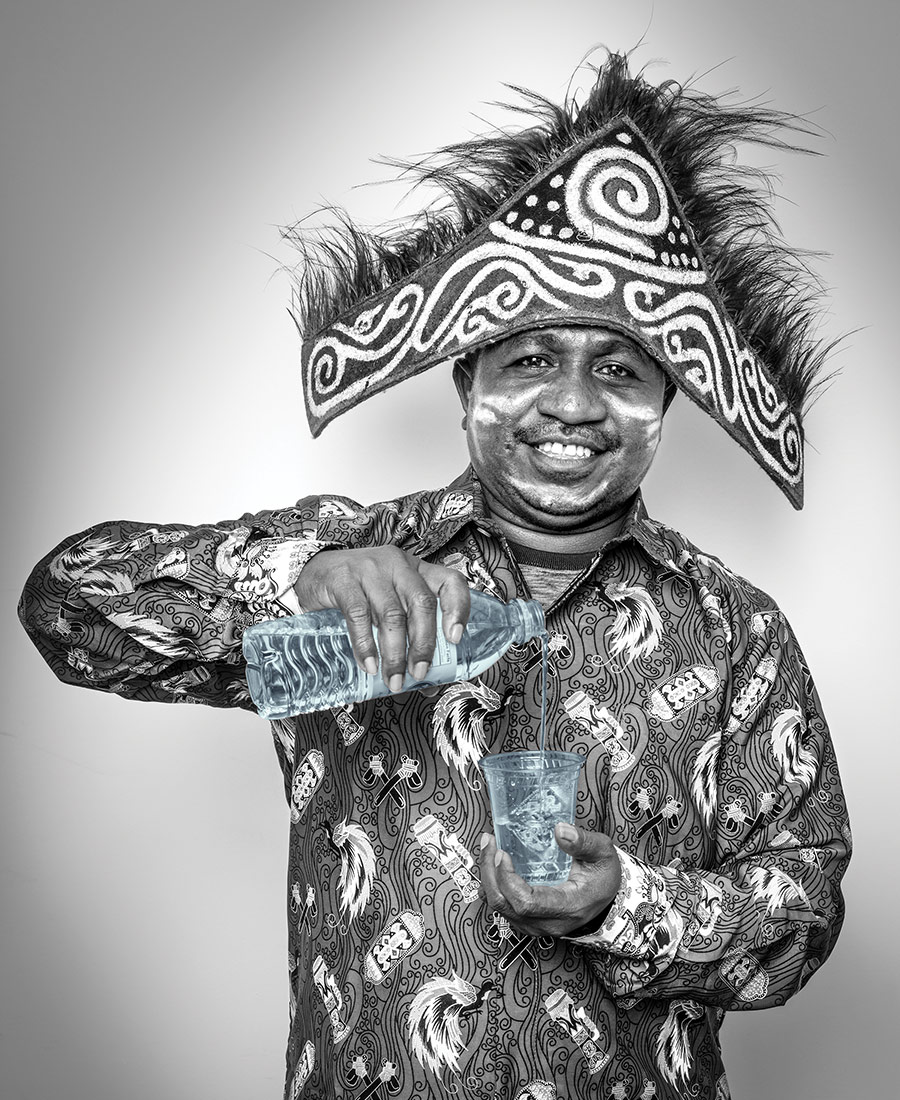
^ 5. Kristian Sauyai
Local Homestay Business Association of the Raja Ampat District, Indonesia
Life at sea is important. I’m the son of a fisherman and this life is inherited from our parents. The sea is the source of our life and the tourism associated with it has made a difference to our family. We must keep it beautiful and sustainable because we feel the changes that occur in our oceans, as does the environment and society at large. My chosen SDG goal is #14: Life Below Water. Water is important for both humans and animals. It’s important for water to be kept clean so that it doesn’t threaten life at sea. If it does, it threatens our incomes too. If the sea becomes broken our life will become hard. We are just like the seals – who also eat from the ocean.
To learn more about the Equator Initiative and all 31 2017 Equator Prize Winners, please visit: www.equatorinitiative.org. To learn about the SDG Indigenous Heroes photo series, please visit: RalphReutimann.com/sdg
If you like this, subscribe here for more stories that Inspire The Future.

